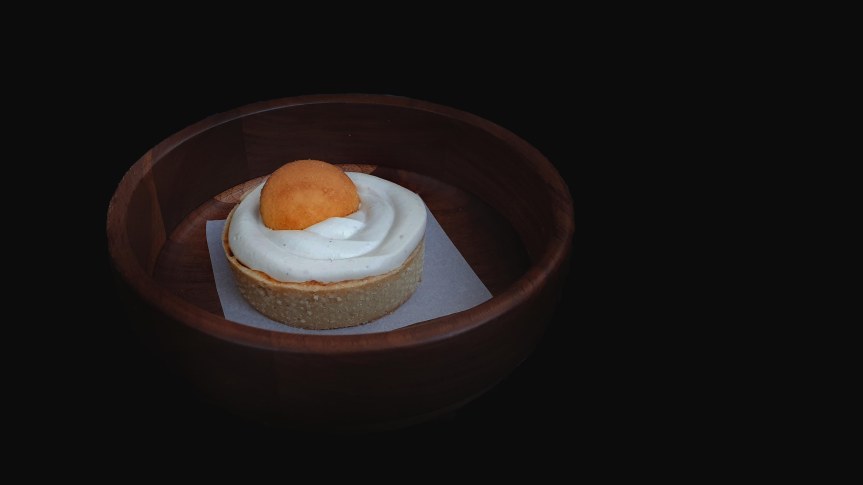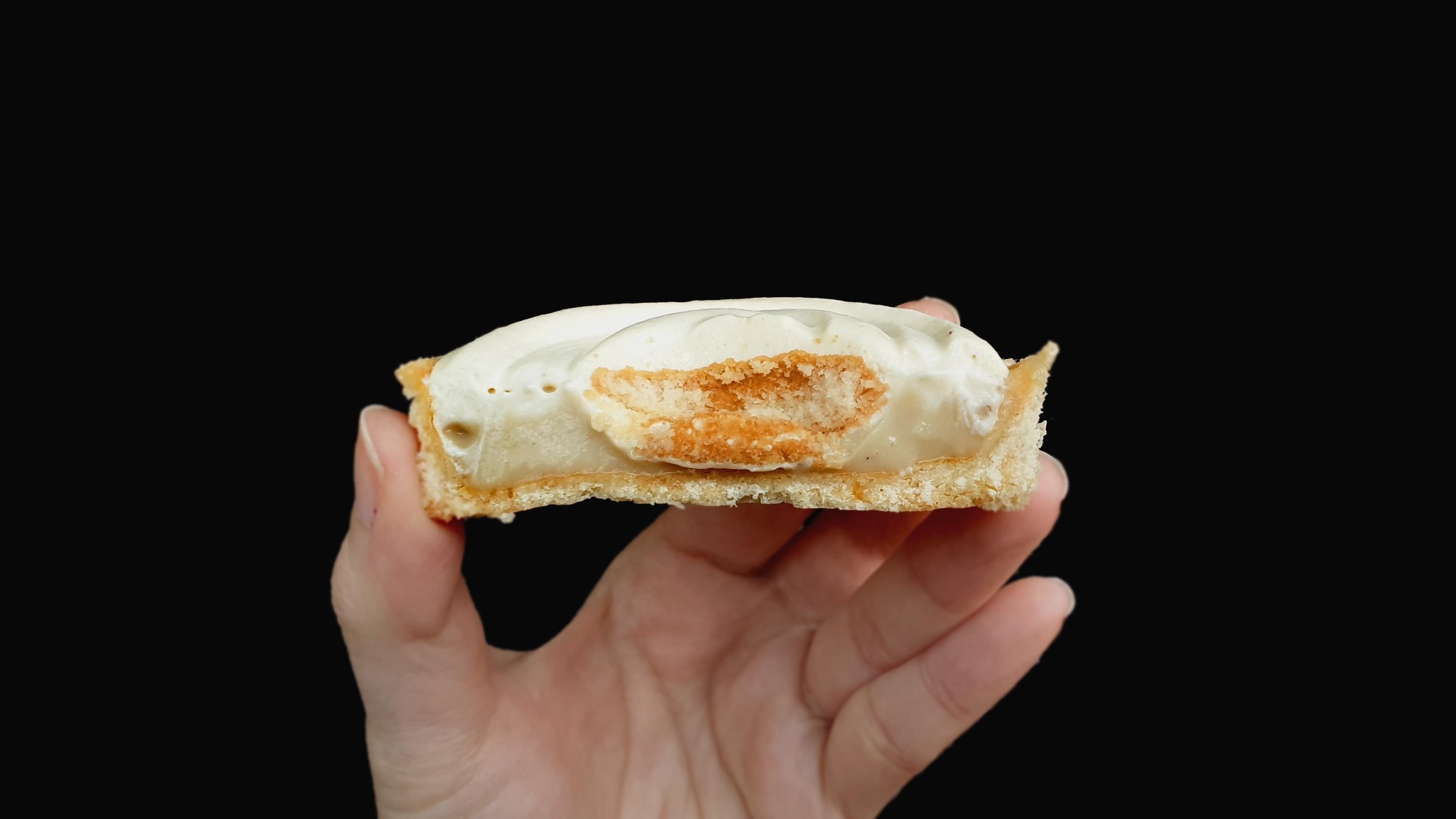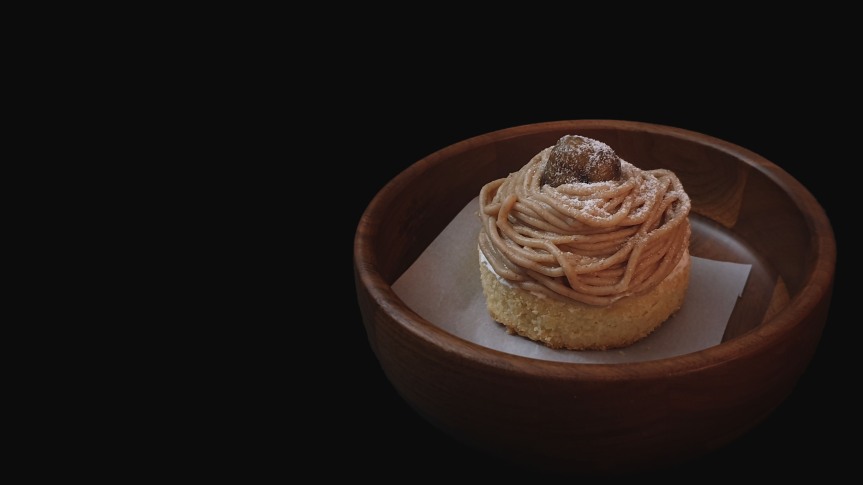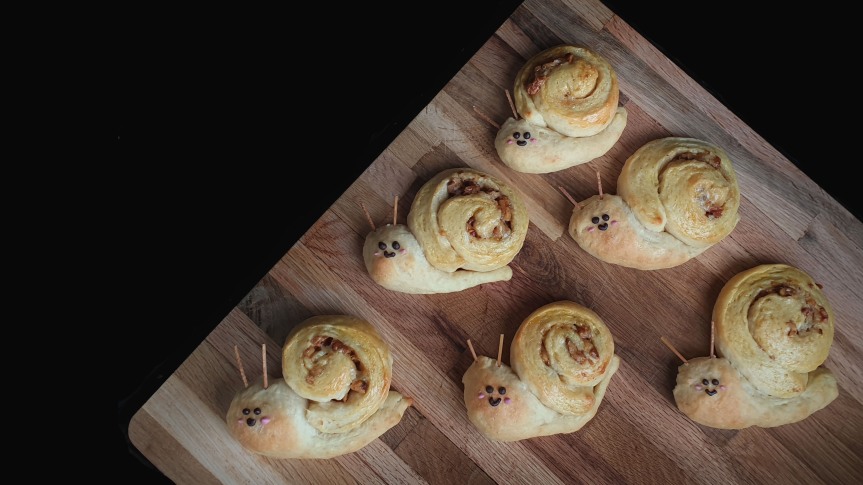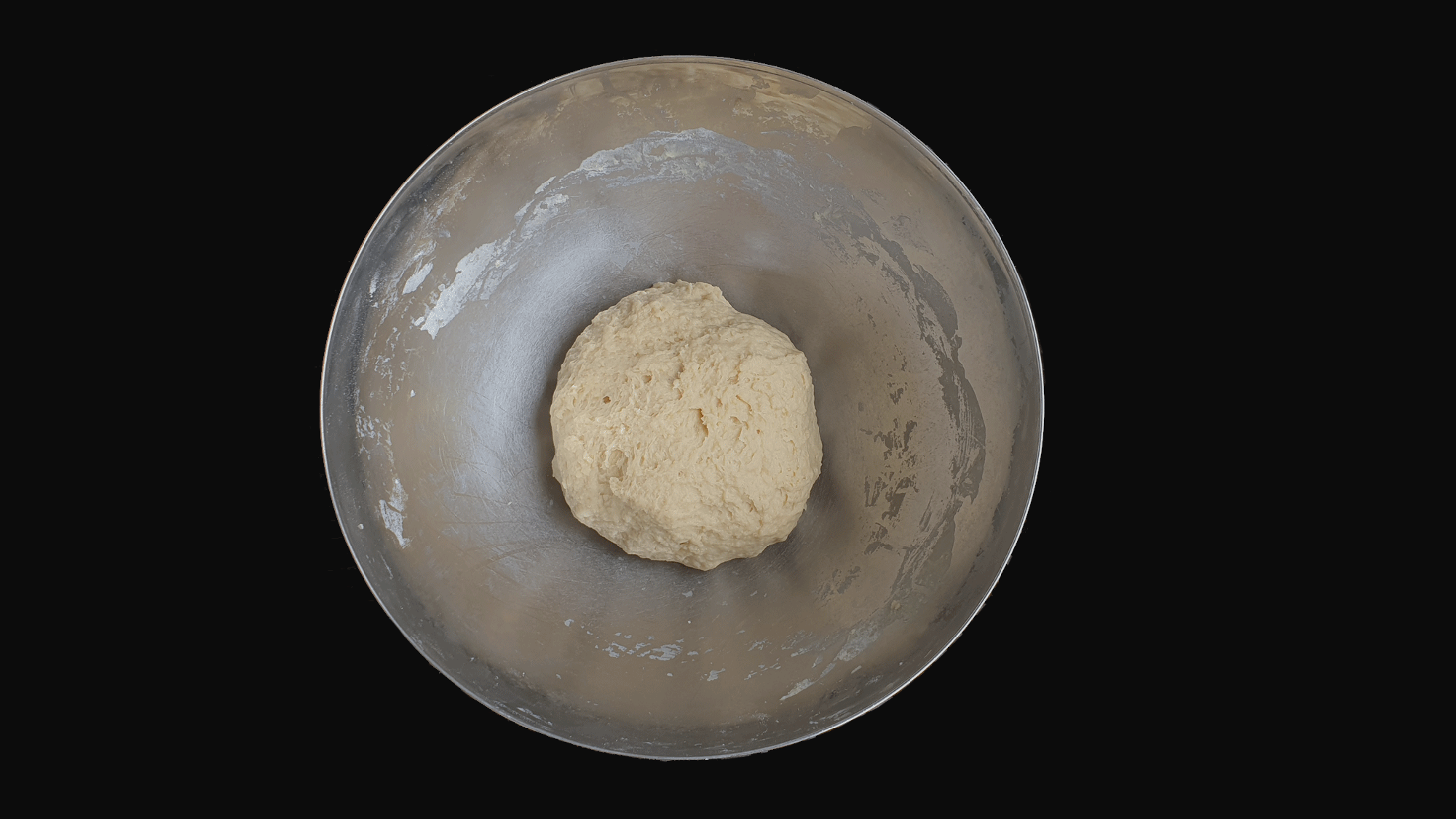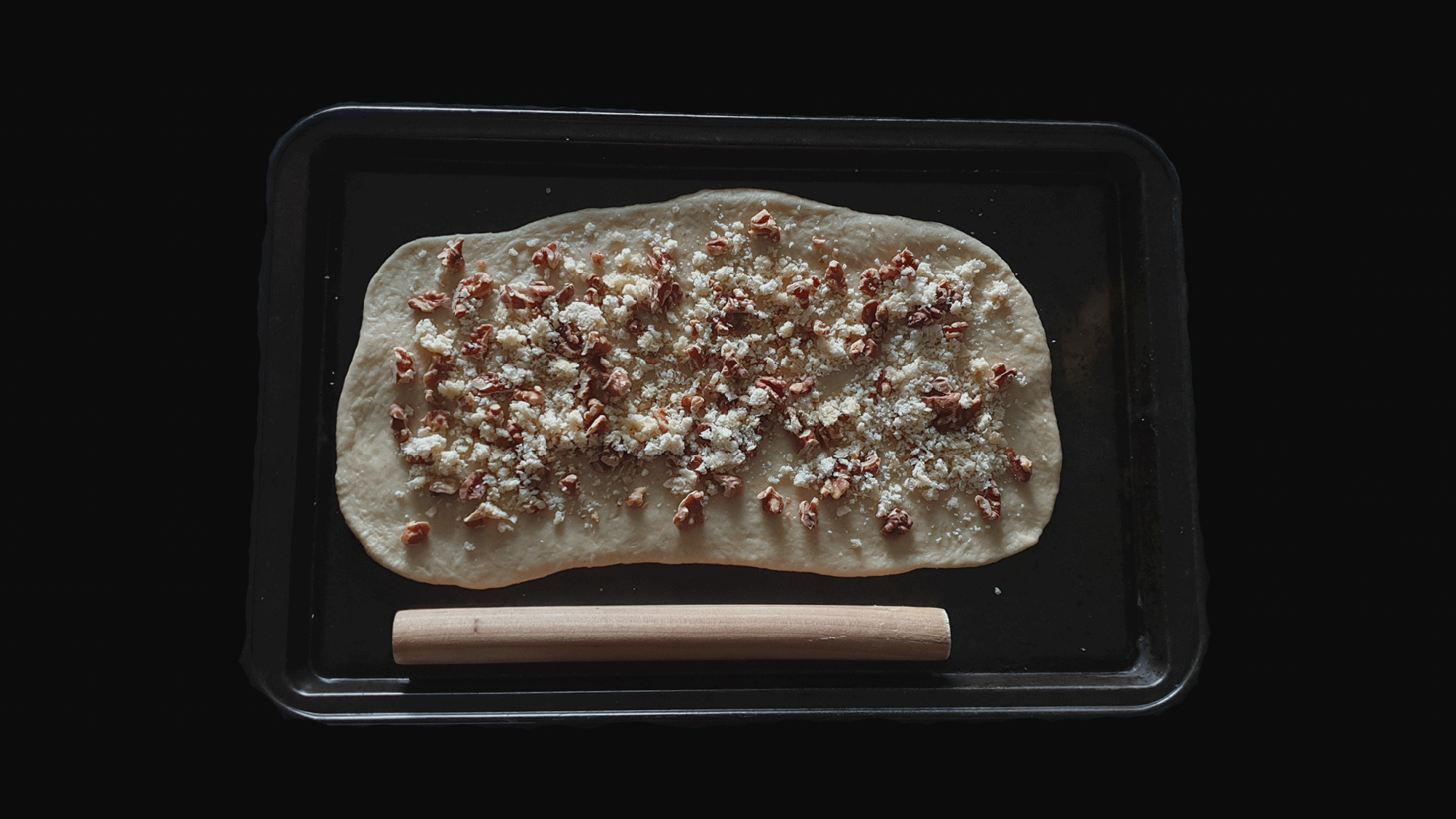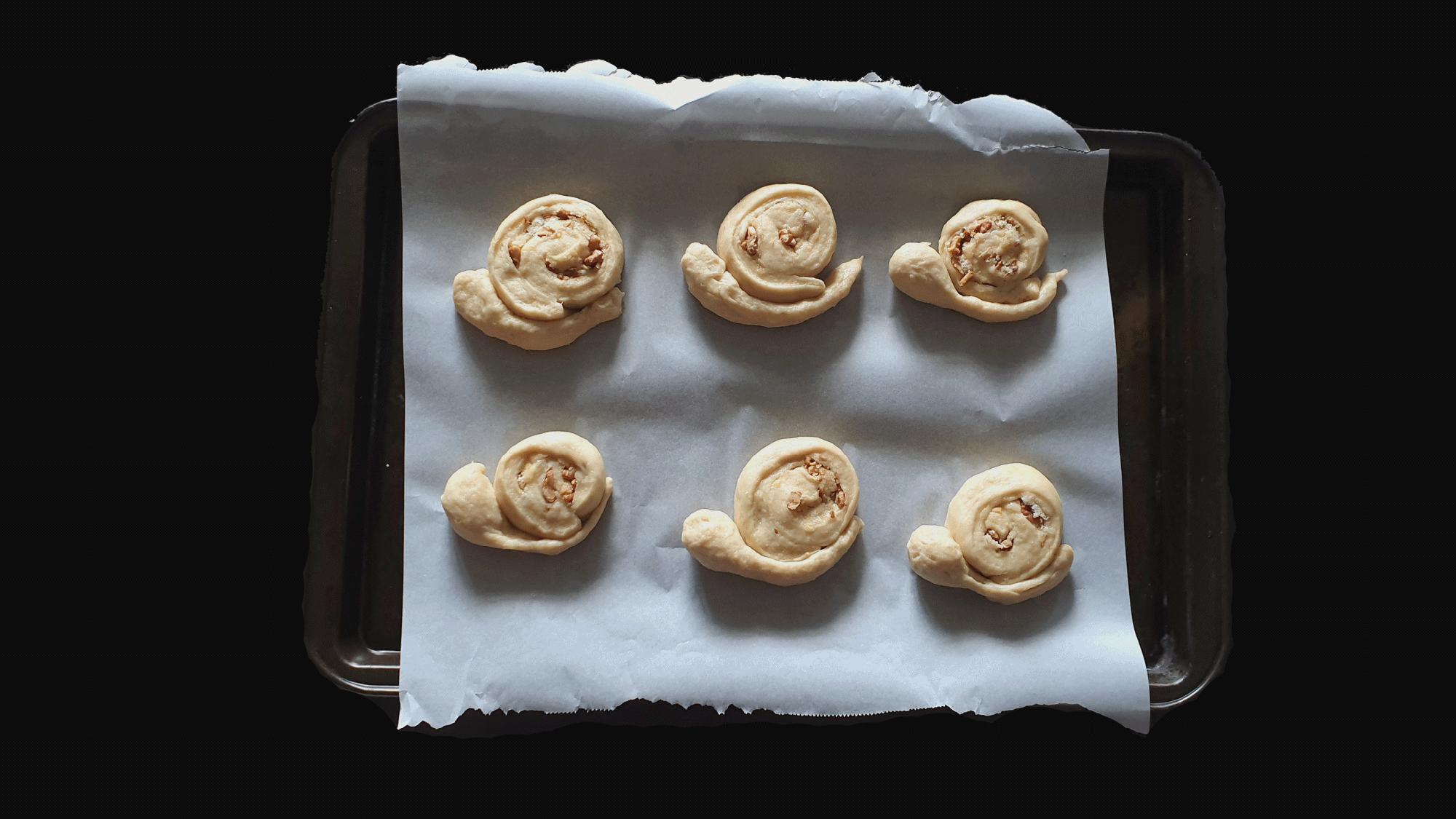This ice cream has a strong banana flavour, while maintaining perfect creaminess. This is achieved by steeping bananas in milk and cream overnight, and throwing away the flavourless banana pulp. That way you get maximum banana flavour without compromising the ice cream texture with actual banana.

And of course you got to add some crunch with bits of snickerdoodle cookies throughout the ice cream. Banana and cinnamon (and I threw in some five spice powder in too after raiding my mother’s spice pantry why not) is a great combination, and these cookies remain crunchy even after freezing. There’s extra cream of tartar and baking soda in these cookies, resulting in a puffier cookie so they don’t become super hard after freezing.

This ice cream was a big crowd pleaser, even winning over the cinnamon-hater (there’s always one). It is probably one of my top 3 favourite ice cream flavours that I’ve made (together with pistachio and blue cheese and pear).

The recipes for the ice cream base and cookies were from Salt and Straw’s Ice Cream Cookbook, and the method of steeping bananas in milk is from Stella Parks.
Ingredients
Ice cream base
- 1/2 cup sugar (100g)
- 2 tbsp dry milk powder (12g)
- 1/4 tsp xanthum gum (see notes)
- 2 tbsp light corn syrup (45g)
- 1 1/3 cup whole milk (315g) – might need a tiny bit more (about 10g) to top up any liquid absorbed by the bananas
- 1 1/3 cup heavy cream (300g) – might need a tiny bit more (about 10g) to top up any liquid absorbed by the bananas
- 4 large ripe bananas, thinly sliced (maybe about 330g-ish? idk I didn’t actually weigh my bananas)
- 1/4 tsp five-spice powder (optional, but really brings out the banana flavour)
Snickerdoodle cookies (will make more than you need but I didn’t feel comfortable reducing this recipe any futher)
- 4 tbsp unsalted butter, room temperature (57g)
- 1/2 cup granulated sugar (100g), plus 1.5 tbsp for rolling the cookies in
- 1/2 large egg (just weigh the contents of one cracked egg and divide by 2)
- 3/4 cups all-purpose flour (94g)
- 1 tsp cream of tartar
- 1 tsp salt
- 1 1/2 tbsp cinnamon
Method
Banana milk and cream
- About 2 days before churning the ice cream: Combine the milk and sliced banana into a saucepan and bring to a simmer over medium heat, scraping along the bottom occasionally to prevent scorching. Once it comes to a simmer remove from heat, cover, and let cool to room temperature. Then refrigerate overnight.
- The next day, bring the banana milk back to a simmer over medium heat, then strain to remove the banana pulp, pressing on the pulp to release extra liquid. (You can reserve the pulp to make a muffin or something).
Ice cream base (the day before churning the ice cream)
- Weigh the banana milk and cream, and top up to 615g with a 1:1 mixture of milk and cream. Transfer to a saucepan and add corn syrup. Stir well.
- In a small bowl, combine the sugar, milk powder, five spice powder, and xanthum gum and mix well.
- Add the sugar mixture into the saucepan and whisk until smooth. Heat over medium heat, stirring often and adjusting the heat to prevent a simmer, until the sugar has fully dissolved (about 3 mins). Remove the pot from the heat.
- Whisk in the cream and transfer the mixture to an airtight container and refrigerate (at least 6h but ideally 24h).
Snickerdoodle cookies (start the day before churning the ice cream)
- In a large bowl, beat the butter and 1/2 cup sugar until light and fluffy, and a shade lighter.
- Add the egg and mix until combined.
- In a separate bowl, whisk the flour, cream of tartar, baking soda, and salt to make sure there are no lumps.
- Add the flour mixture to the butter and mix until flour is incorporated and you have a crumbly dough.
- Press the dough together to form a disk, cling film, and refrigerate until chilled, at least 2h or ideally overnight.
- When ready to bake, heat the oven to 375°F/190°C. Line a sheet pan with baking paper.
- Mix the remaining 1.5 tbsp of sugar and cinnamon together in a bowl until thoroughly combined.
- Roll the cold cookie dough into golf-ball-sized balls. Coat the cookie balls in the sugar-cinnamon mixture, and transfer to the prepared sheet pan, leaving about an inch between the cookies.
- Bake in the preheated oven, rotating the sheet pan halfway through the baking time, until the cookies are golden around the edges and the tops crack, about 20 mins.
- Transfer to a cooling rack and let cool completely. Crumble the cookies to 1/4-1/2 inch pieces. The cookies can be stores in an airtight container at room temperature for 1 week.
Assembly
- Pour the ice cream base into an ice cream maker and turn on the machine, and churn until the mixture has the texture of soft-serve.
- When the ice cream is ready, transfer a layer of ice cream into a freezer-friendly container. Add the cookie pieces, distributing evenly across the ice cream. Repeat with a layer of ice cream, then the cookies again. (If you use a wide and shallow container, like me, just do 2 layers of each).
- Cover the ice cream with parchment paper (to prevent freezer burn), pressing it to the surface of the ice cream so it adheres, and cover with a lid.
- Freeze the ice cream until solid.
Notes
- Xanthum gum is a thickener/stabiliser commonly used in vegan/gluten-free baking, so that’s where you might find them in the supermarket. Bob’s Red Mill brand is one of the more common brands.
- If you’re using an ice cream maker which bowl needs to be frozen beforehand, make sure to cover the bowl with clingfilm so ice crystals won’t form in the bowl and cause your ice cream to have a sandy texture. Also to be safe, freeze the bowl for at least 2 days and at the coldest setting your freezer will go.
- My ice cream maker takes about 20-30 minutes to reach soft-serve consistency.


